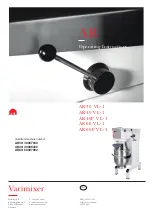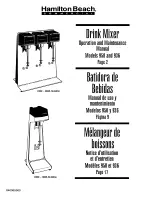
Making the Most Of Your Mixer
MG12/4FX
9
At first glance the block diagram of even a modest mixer can look like a space-station schematic. In reality, block diagrams are
a great aid in understanding how the signal flows in any mixer. Here’s a greatly simplified block diagram of a generic mixer to
help you become familiar with the way these things work.
2-1. Greatly Simpli
fi
ed Mixer Block Diagram
■
Input Channel
1
Head Amp
The very first stage in any mixer, and usually the only
stage with significant “gain” or “amplification.” The head
amp has a “gain” control that adjusts the mixer’s input
sensitivity to match the level of the source. Small signals
(e.g. mics) are amplified, and large signals are attenuated.
2
Equalizer
Could be simple bass and treble controls or a full-blown
4-band parametric EQ. When boost is applied the EQ
stage also has gain. You can actually overload the input
channel by applying too much EQ boost. It’s usually
better to cut than boost.
3
Channel Peak LED & Fader
The channel peak LED is your most valuable tool for
setting the input “gain” control for optimum
performance. Note that it is located after the head amp
and EQ stage.
■
Master Section
4
Summing Ampli
fi
er
This is where the actual “mixing” takes place. Signals
from all of the mixer’s input channels are “summed”
(mixed) together here.
5
Master Fader & Level Meter
A stereo, mono, or bus master fader and the mixer’s main
output level meter. There could be several master faders
depending on the design of the mixer—i.e. the number of
buses or outputs it provides.
2. Where Your Signal Goes Once It’s Inside the Box
1
2
3
4
5
Input Channel
Master Section
Signals from the mixer’s
other input channels
(if they are assigned to this
master output or “bus”).
Содержание MG12/4FX
Страница 29: ...Appendix MG12 4FX 29 Block Diagram and Level Diagram...
Страница 30: ...MG12 4FX 30 MEMO...










































